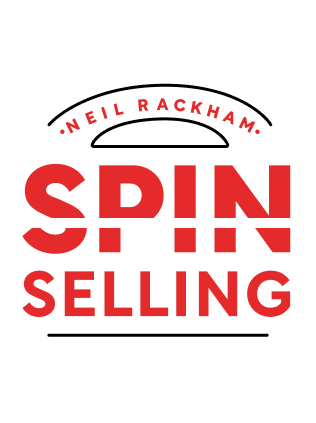

This article is an excerpt from the Shortform summary of "Spin Selling" by Neil Rackham. Shortform has the world's best summaries of books you should be reading.
Like this article? Sign up for a free trial here .
What are SPIN selling implication questions? How can they help you succeed in the SPIN selling method?
Implication questions are the “I” in the SPIN selling approach. Used in large sales, they’re sophisticated questions that explore the implications or ramifications of a customer’s problem—for example, “How will this affect your fourth-quarter results?” or “What will this mean for your biggest customer?” They underscore a problem’s significance and create an urgency to address it.
Implication questions are one type of question in the SPIN selling approach that focuses on finding solutions.
The SPIN Selling Approach
Huthwaite researchers found that successful reps in large sales spend the most time on the investigating stage and handle it differently from the traditional approach.
In traditional sales, reps emphasize product features and use standard techniques to address objections and close a sale. In contrast, successful reps ignore traditional techniques and instead focus on asking four different types of questions in a certain order, the SPIN sequence. Here’s how to use this process:
1) S-Situation questions: Start by asking fact-finding and background questions, such as, “What do you see as the company’s biggest growth opportunities?” Asking too many of these questions can impose on the customer’s time and patience, so use them judiciously.
2) P-Problem questions: Once you understand the customer’s situation, ask questions that explore problems or issues your product or solution can solve—for instance, “Are you concerned about meeting your clients’ quality standards with your aging equipment?” Less experienced reps don’t ask enough of these questions.
3) I-Implication questions: Asking good situation and problem questions may be enough to win a small, uncomplicated sale. However, you need to go further in large sales and ask more sophisticated questions that explore the implications or ramifications of a customer’s problem—for example, “How will this affect your fourth-quarter results?” or “What will this mean for your biggest customer?” The point is to underscore a problem’s significance, and create an urgency to address it. These are more difficult questions to frame, even for experienced salespeople.
4) N-Need-payoff questions: These questions lead the customer to articulate the benefits of your product or solution. For example, you might ask, “How useful would it be if we could increase your output by 10%?” or “How would being able to reduce errors help you?” When the customer links the value of solving a problem with the capabilities of your product, he’s more inclined to accept your product as the best solution. Need-payoff questions contribute strongly to success in large sales.
Implication Questions
SPIN selling Implication questions are a tool for building implied needs into explicit needs big enough to require action. These questions explore the larger implications, ripple effects, or consequences of a seemingly small problem, making it bigger.
Implication questions Examples are:
- Could the limitations of your equipment be costing you new business?
- What effect does that have on quality?
- Do your equipment problems increase turnover, or make it more difficult to hire operators?
- Is this leading to increased costs?
Research indicates that:
- Implication questions in SPIN selling contribute strongly to success in larger sales.
- They increase the customer’s perception of value: when a problem seems big, your solution seems more valuable or worth the price.
- They’re more difficult for reps to ask than situation or problem questions because they challenge customers.
Most sales reps stop probing after they’ve asked situation and problem questions. In small sales, after they’ve uncovered problems or implied needs, reps typically move on to offering a solution—which may be sufficient to make a sale. However, problem questions aren’t enough in large sales where your solution is expensive.
You have to ask implication questions to underscore the magnitude of problems before offering your solution.
Imagine the customer saying, “So what?” in response to a problem, and think about how to answer that by making the problem bigger. Then phrase your arguments as questions.
For example, if you’re trying to sell a new machine costing $120,000, you could ask SPIN selling implication questions that emphasize the workaround costs of continuing to use the old system over time. It may be that because the old system is difficult to use, the customer has more turnover in operators. This leads to overtime, outsourcing, recruiting, and training costs, plus a loss of quality. When the customer factors in these costs, the problems of the older equipment appear much bigger—and a $120,000 solution starts to seem reasonable.
Dealing With Decision-Makers
Problem questions are often enough to get a commitment when you’re dealing with users of your product or influencers who will advocate for you, but implication questions in SPIN selling are more effective when dealing with decision-makers. These questions are a natural fit because a decision-maker’s job depends on trouble-shooting or anticipating the ways things can go wrong. When you explore implications, you’re speaking their language.
A Downside
Asking a lot of implication questions can leave the customer feeling negative or gloomy. The next type of question—the need-payoff question—counters that feeling by moving the conversation toward solutions.
Plan Implication Questions
SPIN selling Implication questions are difficult, if not impossible, to formulate on the fly, so plan them in advance. Remember, these questions contribute strongly to sales success. To plan implication questions:
- Write down a problem the customer may have.
- Write down potential consequences or effects the problem might have.
- For each consequence, write the question it suggests. For example, if the problem is a shortage of qualified people to do something, the implication questions might be whether the shortage will lead to the company incurring overtime costs, or to having difficulty filling vacancies.
Implication questions in SPIN selling can help you turn a customer’s need into a purchase. By learning the right implication questions to ask, you can energize your sale strategy.

———End of Preview———
Like what you just read? Read the rest of the world's best summary of Neil Rackham's "Spin Selling" at Shortform .
Here's what you'll find in our full Spin Selling summary :
- What the SPIN in SPIN Selling stands for
- How to demonstrate real value to the person you're selling to
- How to get commitment from your customer to close the sale fast






